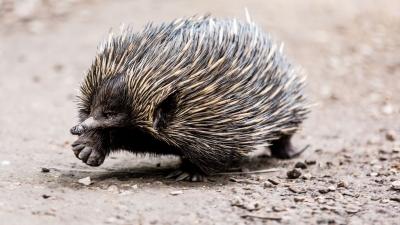
We know mammals do not lay eggs, and that they give birth to live young. But there are two kind of egg-laying mammals on the planet. The spiny anteaters (echidnas) and the duck-billed platypuses found in Australia are the only two mammals that lay eggs. While the platypus can live both on land and in water, the echidna is terrestrial. They are classified as mammals because they are furry, warm-blooded and produce milk for their young. Did you know their babies are called puggles?
Platypuses feed on small aquatic animals and locate their food by using their highly sensitive snouts. They often travel along the bottom of a riverbed and dig through the sediment in search of things to eat. These animals are ready to mate at 2 years of age and often have more than one partner in their lifetime. When the female prepares to lay her eggs, she goes off to a secluded den by herself to wait out the process. She will typically only lay one to three eggs.
Because spiny anteaters have no teeth, their sticky tongue is used to catch termite ants and smash them inside their mouths. Short-beaked echidnas have an excellent sense of smell, which comes in handy during breeding season when searching for potential mates. It takes between 20 and 30 days for the female to gestate and lay an egg. The hatchling will live in a small pouch hidden in its mother’s fur and nurse for several weeks until it’s old enough to survive without her protection.
Picture Credit : Google




